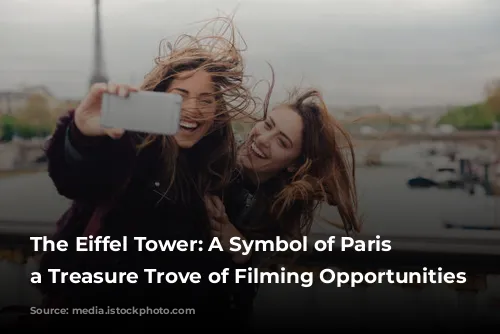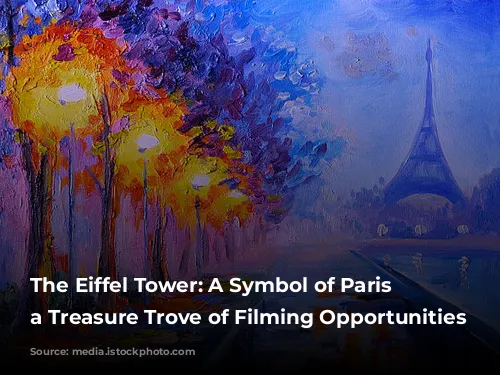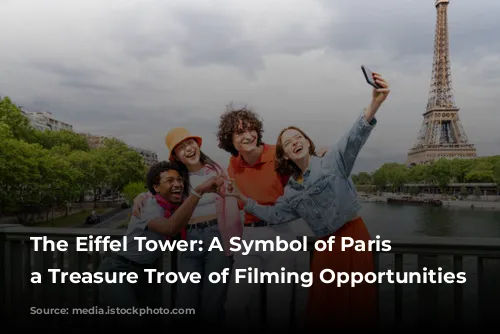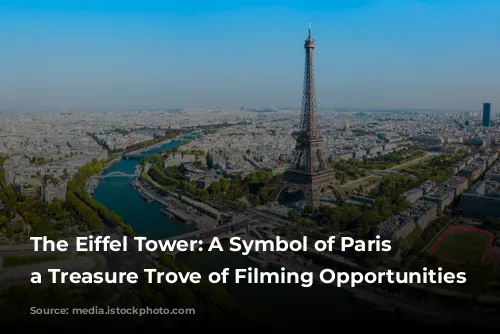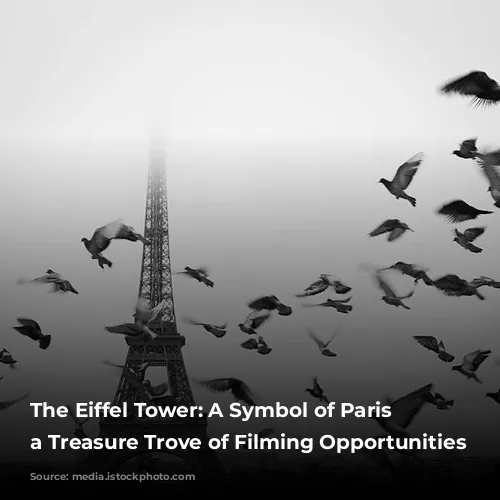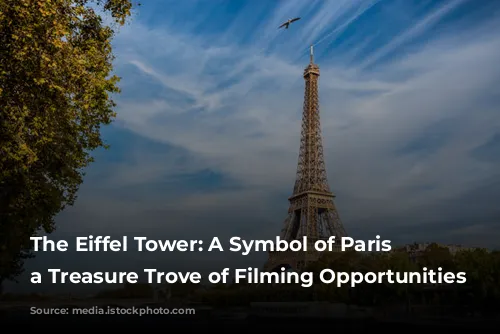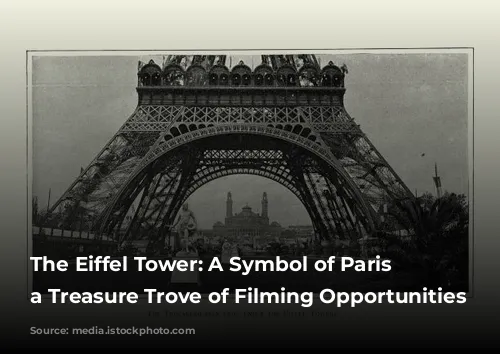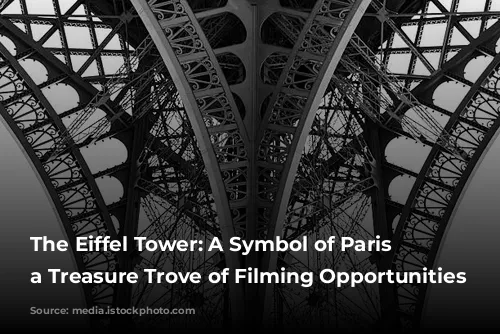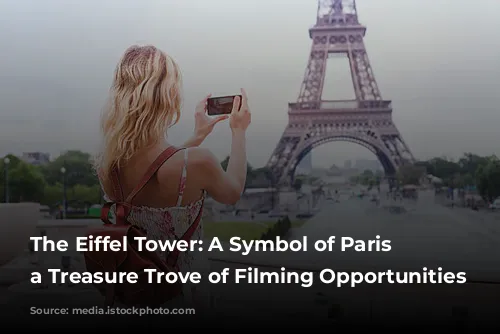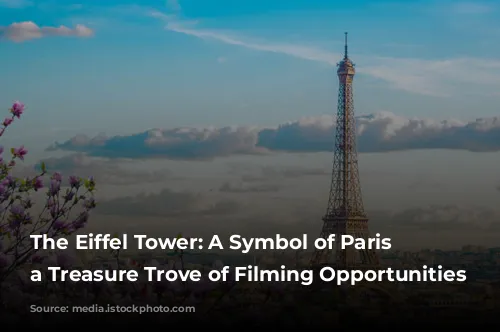The Eiffel Tower, a majestic structure gracing the Parisian skyline, is a worldwide symbol of France, embodying the city’s romance and grandeur. Its iconic silhouette stirs the imagination, prompting countless artists and filmmakers to pay homage through films, documentaries, photographs, and other creative mediums.
But the Eiffel Tower is not just a breathtaking landmark; it’s also a popular tourist destination, welcoming millions of visitors each year. Its image has become deeply ingrained in our collective consciousness, adorning everything from postcards to fashion accessories.
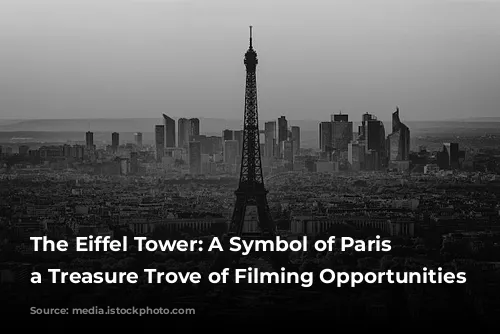
Filming Opportunities at the Eiffel Tower
While the Eiffel Tower’s image is a captivating subject for creative endeavors, there are specific guidelines to follow when incorporating it into your projects. This ensures the monument’s integrity and preserves its unique character.
Daytime Filming
The Eiffel Tower’s daytime appearance is readily available for use in public domain. This means you can freely reproduce its image without needing prior approval from the Société d’Exploitation de la Tour Eiffel (SETE), the company managing the Eiffel Tower’s image on behalf of the City of Paris.
Nighttime Filming
The Eiffel Tower’s illuminations, however, are a protected aspect. They bring a distinct, magical touch to the monument, and their use in media requires prior authorization from the SETE. This authorization comes with a fee, which is determined by the intended use of the image, the media plan, and other factors.
Filming Locations
The Eiffel Tower offers various filming locations, both inside and outside the structure:
- Views from the Tower: Enjoy panoramic views of Paris from the two observation decks located at 57 meters and 116 meters.
- Accessible Spaces: The forecourt, floors, and even areas not open to the public can be utilized depending on your project’s needs.
- Technical Considerations: The SETE team will carefully assess each filming request, considering technical requirements, artistic vision, and ensuring the monument’s safety. They aim to find a balance between fulfilling your creative goals and protecting the Eiffel Tower’s legacy.
Practical Information for Filming
Here are some practical considerations for filming at the Eiffel Tower:
- Filming Times: Filming is generally allowed during both day and night, with the potential to extend the illumination time on a case-by-case basis.
- Access for Teams and Equipment: A dedicated service lift connects the ground level to the second floor, offering convenient access for equipment and personnel.
- Technical Support: The SETE team works closely with filmmakers to address technical challenges, including electrical requirements, safety protocols, and access for crews and equipment.
- Parking: Temporary parking for unloading is available on Avenue Gustave Eiffel, but vehicles must be moved promptly.
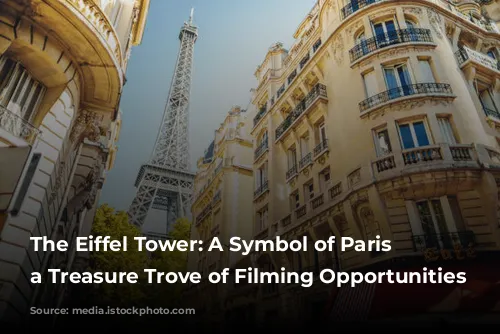
The Eiffel Tower Brand: Protecting its Legacy
The Eiffel Tower’s name and image are protected trademarks, representing the monument’s unique identity and value.
Any commercial use of the “Eiffel Tower” brand, whether in product labeling or promotional materials, requires a licensing agreement that is negotiated on a case-by-case basis by the SETE. This ensures that the Eiffel Tower’s brand is used responsibly and in a way that upholds its reputation.
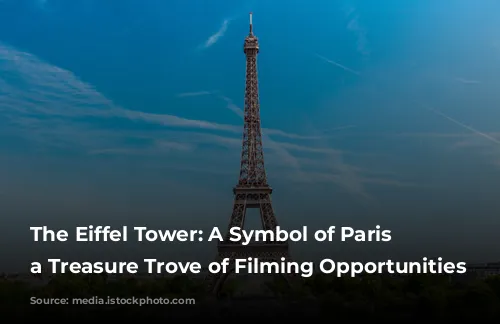
Your Guide to Using the Eiffel Tower’s Image
The Eiffel Tower, a cherished landmark and a captivating subject for filmmakers, offers a range of filming possibilities. But it’s important to understand the guidelines governing the use of its image and brand.
By adhering to these guidelines, you can create stunning visuals that capture the essence of this iconic monument while respecting its history and legacy.
If you’re unsure about the specific conditions for using the Eiffel Tower’s image, don’t hesitate to contact the SETE team for guidance. They are dedicated to assisting filmmakers in navigating the process, ensuring that your creative vision aligns with the Eiffel Tower’s enduring appeal.
